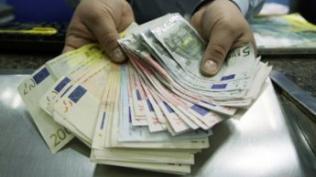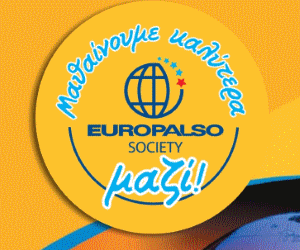As the eurozone marks the 10th anniversary of the euro on Sunday amid growing fears over the bloc’s sovereign debt crisis, FRANCE 24 takes a look back at when the common currency was introduced in 2002, and still seen as a cause to celebrate.
By Rachel HOLMAN (text)
Ten years after the eurozone first adopted its common currency, the economic bloc finds itself in the midst of a grave foreign debt crisis. Yet at the stroke of midnight on January 1, 2002, 12 member states of the European Union not only celebrated the New Year, but also feted their new currency, the euro.
In Paris, people lined up at cash machines, eager to withdraw the crisp new bills. Euro signs were everywhere to be seen – on winter street decorations, projected onto the face of buildings, even lit up on the side of the city’s historic Pont Neuf.
The culmination of several years of negotiations and planning, the euro had finally come to fruition in what was the largest cash changeover the world had seen.
“It went very fast. It was quite amazing – financial experts were thinking the shift would be more difficult, but it was so natural”, said Philippe Dessertine, a French economist and director of high finance at Paris’ Institut Français de Gestion .
The so-called “year of the euro” was even feted by Spanish pop singer Rosa, whose kitsch “Europe is living a celebration” landed her seventh place on the hit TV show Eurovision Song Contest in May 2002.
Despite a general atmosphere of excitement and celebration, not everyone was thrilled by the prospect of handing over their sovereign currency in exchange for euros. For some it meant a loss of buying power, for others a loss of sovereignity, and for others still, a change they were unwilling to embrace.
Apprehensions about the euro were in no way new. In 1998, one year before the first supply of euro bills was even printed, Alain Genestar, then-editor of the French weekly, the Journal du dimanche, addressed these fears in an article published in his newspaper on May 3.
“To defend the euro… is to explain that thanks to – not because of – the euro, countries will lose some of their rights to a sovereign currency or budget, but that in any case, these things were an illusion, a fiction held up by certain political leaders out of nostalgia or lack of faith”, Genestar said.
Despite some initial misgivings, the euro flourished for the first many years of its existence. According to the European Central Bank, in the days following the euro’s debut in 2002, it was pegged at around $0.89. It quickly crept up in value, gaining strength to eventually become one of the world’s strongest currencies. On July 15, 2008 the euro hit a record high against the dollar at $1.599.
“I can remember people trying to quickly convert the price between French francs and euros at the time. Of course, there were machines everywhere that did the maths for them. But within three or four months, people were already speaking in euros, not francs”, said Dessertine. “Five or six years after the changeover, many people didn’t consider it as a big revolution – it was seen as absolutely normal”.
By 2011 the total number of EU countries using the euro surged to 17, or more than 330 million people.
However, it appears that enthusiasm for the euro has dwindled since the eurozone crisis hit in 2010. As some experts project that the economic bloc could be headed for a major recession in 2012, the confidence that carried the currency through its early years feels
like a dim memory on its 10th anniversary.
.france24.com
Τελευταία νέα
- EUROPALSO - Εγκύκλιος 27/06/2025: Απογραφή ΚΞΓ – Νέο Πρόγραμμα ΔΥΠΑ για εργαζόμενους και ανέργους – Εξετάσεις Ενηλίκων – WaterFun WaterPark – Βεβαιώσεις Σπουδών Society – Νέες Παροχές για ΚΞΓ ESB – Απενεργοποίηση κωδικών E-Europalso – Υποχρεώσεις Ιουλίου-Αυγούστου 2025
- EUROPALSO - ΦΟΡΟΛΟΓΙΚΕΣ ΥΠΟΧΡΕΩΣΕΙΣ ΙΟΥΛΙΟΣ & ΑΥΓΟΥΣΤΟΣ 2025
- EUROPALSO - Νέο Πρόγραμμα ΔΥΠΑ – Με επιδότηση €750
- EUROPALSO: Προσωπικός Αριθμός – Τι Είναι – Πως Εκδίδεται
- EUROPALSO - φορολογικές υποχρεώσεις ιούνιος 2025
- EUROPALSO: Απογραφή υφιστάμενων αδειών ΚΞΓ <75 σε πληροφοριακό σύστημα OpenBusiness έως 1/12/2025
- EUROPALSO Εγκύκλιος 13/06/2025: Απογραφή ΚΞΓ σε OpenBusiness – WaterFun WaterPark – Βεβαιώσεις σπουδών για ΚΞΓ Society – ESB Online Exams for Adults – Νέες Παροχές για ΚΞΓ ESB – Advisory Offices – Υποχρεώσεις Ιουνίου 2025
- Δωρεάν Webinar: Partners in...Creativity! Transforming EFL through Human - AI Collaboration
- 1st Burlington Community Festival: ΔΩΡΕΑΝ για εκπαιδευτικούς και μαθητές 10/5 - Ίδρυμα Σταύρος Νιάρχος
- EUROPALSO Εγκύκλιος 29/04/2025: Απογραφή ΚΞΓ σε OpenBusiness – ESB Online Exams for Students, Κυριακή, 1/6 – ESB Online Exams for Adults – Νέες Παροχές για ΚΞΓ ESB – Advisory Office – Βεβαιώσεις σπουδών – Τουρνουά Σκάκι, 10/5 – Υποχρεώσεις Μαΐου, Νέα ωρομίσθια




